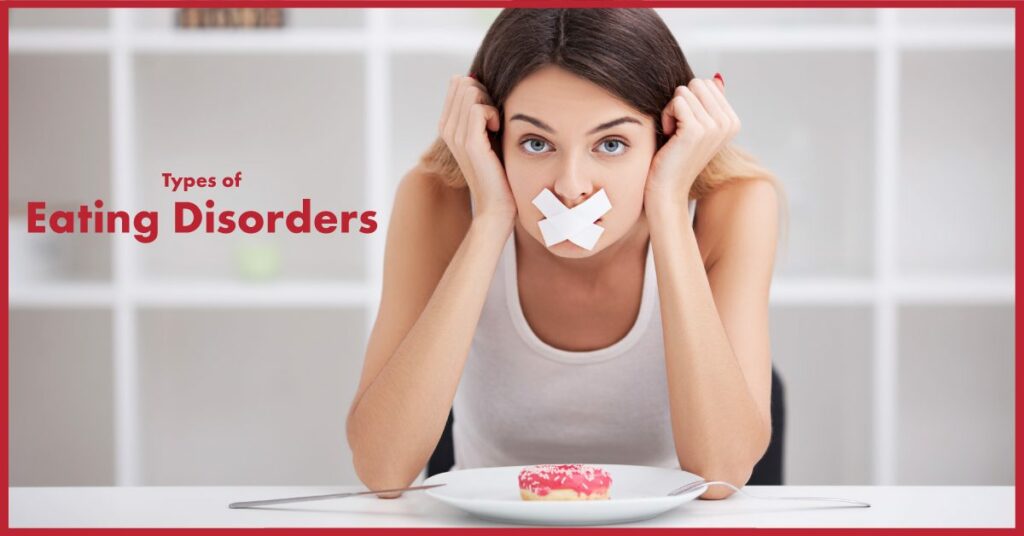Eating disorders are serious mental health conditions that can have life-threatening consequences if left untreated. The good news is that with early diagnosis and treatment, most people with eating disorders recover completely. This comprehensive guide will provide you with an overview of the different types of eating disorders list, their symptoms, and the various treatment options available.
Contents
Defining Eating Disorders
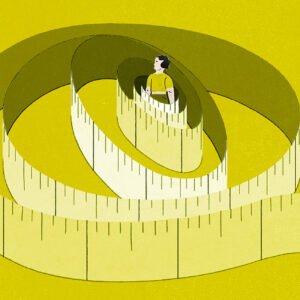 When we think of eating disorders, the first visual in our mind is usually that of an excessively thin person. However, not all eating disorders are about being thin. In fact, the reality is much more than that. Eating disorders are psychological and physiological reactions to a complex set of environmental and emotional triggers. They are characterized by an unhealthy relationship with food and body image. People with eating disorders typically use food as a way to cope with difficult emotions or situations. This can manifest itself in different ways.
When we think of eating disorders, the first visual in our mind is usually that of an excessively thin person. However, not all eating disorders are about being thin. In fact, the reality is much more than that. Eating disorders are psychological and physiological reactions to a complex set of environmental and emotional triggers. They are characterized by an unhealthy relationship with food and body image. People with eating disorders typically use food as a way to cope with difficult emotions or situations. This can manifest itself in different ways.
Eating disorders are not a choice. They are serious mental illnesses that can have devastating consequences if left untreated. It is also important to note that eating disorders can affect people of all genders, ages, races, and socioeconomic backgrounds. This makes it all the more important to be aware of the signs and symptoms so that you can get the help you or a loved one needs.
List Of Eating Disorders
As stated above, eating disorders are more than just being thin. Here is a list of the different types of eating disorders and what they entail.
Anorexia nervosa
Perhaps the most well-known of all eating disorders, anorexia nervosa is characterized by a severe restriction of food intake. This means that people with anorexia nervosa will often try to limit their calorie intake to dangerously low levels. The biggest defining factor of anorexia nervosa is an intense fear of weight gain or becoming overweight.
People with this disorder often have a distorted body image and see themselves as overweight, even when they are severely underweight. This can lead to dangerously low body weight, as well as a host of other physical and psychological complications. Anorexia nervosa has the highest mortality rate of any mental illness.
Bulimia nervosa
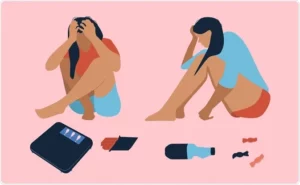 Bulimia is another well-known eating disorder that is characterized by episodes of bingeing and purging. Bingeing refers to eating large amounts of food in a short period of time, often to the point of discomfort. This is typically followed by purging, which can take the form of vomiting, excessive exercise, or the use of laxatives.
Bulimia is another well-known eating disorder that is characterized by episodes of bingeing and purging. Bingeing refers to eating large amounts of food in a short period of time, often to the point of discomfort. This is typically followed by purging, which can take the form of vomiting, excessive exercise, or the use of laxatives.
The distinctive characteristic of this particular disorder is the shame and guilt that people feel after bingeing. This leads them to purge in an attempt to get rid of the calories they have consumed. Bulimia nervosa often starts out as a way to control weight, but it quickly spirals into an obsessive and dangerous cycle.
Binge eating disorder
One may have heard of the phrase “binge-watching” which means to watch multiple episodes of a show in one sitting. Binge eating disorder is similar, but it refers to food instead. People with binge eating disorders will often eat large amounts of food in a short period of time, even when they are not hungry.
The root cause behind this disorder is mostly emotional or psychological. This means that the person may be using food as a way to cope with stress, anxiety, or other negative emotions. Binge eating disorder is more common in women than men and usually begins during adolescence or young adulthood.
Compulsive eating disorder
Also labeled as “food addiction”, compulsive eating disorder is another serious problem. People with this disorder will often eat even when they are not hungry and continue eating until they feel sick. This is usually a result of an emotional issue such as boredom, sadness, or stress.
One may confuse this with binge eating disorder, but the key difference is that people with compulsive eating disorders will often eat until they are physically sick, whereas people with binge eating disorders will usually stop before they reach that point.
It may also differ in the fact that binge eating disorder is often associated with feelings of guilt or shame afterward, whereas compulsive eating disorder is not.
Avoidant/restrictive food intake disorder
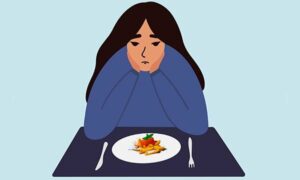 One may be able to guess what this disorder entails from the name. People with avoidant/restrictive food intake disorder will often restrict their food intake for various reasons. This may be due to a fear of choking, a dislike of certain textures or smells, or even just a general lack of interest in food.
One may be able to guess what this disorder entails from the name. People with avoidant/restrictive food intake disorder will often restrict their food intake for various reasons. This may be due to a fear of choking, a dislike of certain textures or smells, or even just a general lack of interest in food.
This can obviously lead to weight loss and other physical complications, but it can also have a serious impact on one’s mental health. People with this disorder often have a very poor quality of life and may isolate themselves from others as a result.
There is a general tendency to confuse this disorder with anorexia. However, the differences lie in the fact that people with anorexia nervosa restrict their food intake out of fear of gaining weight, whereas people with avoidant/restrictive food intake disorder do so for other reasons.
Orthorexia nervosa
A rather unusual disorder, orthorexia nervosa is characterized by an obsession with healthy eating. This may not sound like a bad thing at first, but it can quickly spiral out of control. People with this disorder will often become fixated on certain “healthy” foods and will only eat those things.
This may be an unusual and unheard type of eating disorder. However, with a rise in the socio-cultural factors and the media, the prevalence of this disorder has been on a constant rise. This is an eating disorder that is characterized by an intense fear of gaining weight. People suffering from this disorder will go to great lengths to avoid putting on even a single pound.
This can obviously lead to problems if the person is not getting enough of the nutrients they need. In severe cases, orthorexia nervosa can lead to malnutrition and even death.
Pica
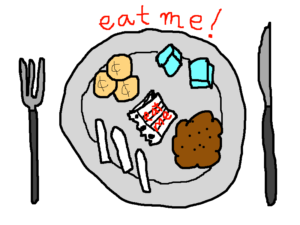 Pica is one of the most unusual eating disorders on this list. It is characterized by an obsession with non-food items. People with pica will often eat things like dirt, paint, hair, or even glass. This can obviously lead to serious health problems, as well as social and emotional ones.
Pica is one of the most unusual eating disorders on this list. It is characterized by an obsession with non-food items. People with pica will often eat things like dirt, paint, hair, or even glass. This can obviously lead to serious health problems, as well as social and emotional ones.
Pica is most common in children and pregnant women. However, it can also occur in people with mental disabilities or certain cultural beliefs.
Rumination syndrome
At the very last, rumination syndrome in eating disorders refers to the regurgitation of food. This may happen shortly after eating or even hours later. People with this disorder will often chew their food and then spit it back out or vomit it up.
This disorder is the most unusual one and not very well-known. It is distinct from other disorders in that it is characterized by an intense fear of gaining weight. This disorder usually affects young women and girls, but it can also affect boys. This can obviously lead to weight loss and other physical complications. It can also lead to social isolation and emotional problems.
This sums up our eating disorders list. These are all the different types of eating disorders that are currently recognized. As you can see, they vary quite a bit in terms of symptoms and severity.
Warning Signs
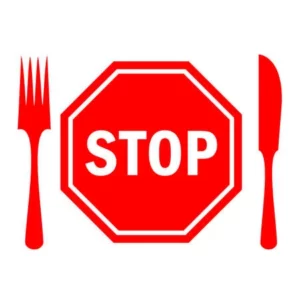 Although all these disorders vary in nature, there are certain key points they have in common. This means that if you suspect that you or someone you know has an eating disorder, it is important to look out for the following warning signs:
Although all these disorders vary in nature, there are certain key points they have in common. This means that if you suspect that you or someone you know has an eating disorder, it is important to look out for the following warning signs:
- Preoccupation with food, weight, and appearance
- Unhealthy or dramatic weight loss or gain
- Obsessive exercise regimen
- Extremely restrictive dieting
- Wearing loose or baggy clothes to hide their body
- Suddenly alarming changes in appearance
- Frequent trips to the bathroom after meals
- Significant mood swings
- Skipping meals or binge eating in extremities
- Feeling anxious or embarrassed around conversations about food
- Purging through various means
- Feeling out of control around food
- Withdrawing from social activities
- Low self-esteem or negative body image
- Constantly looking in the mirror
If you observe these changes in yourself or witness them in someone around you, it might be an indication of something more serious. The best thing to do would be to consult a professional for help as soon as possible.
Diagnosis
Now that we are well aware of the types and warning signs of eating disorders list, how do we proceed with the diagnosis?
The first step is always to speak with a doctor or professional who can help you assess the situation. They will likely ask you about your eating habits, body image, and any other relevant information. From there, they might recommend that you see a mental health specialist for further evaluation. This is because eating disorders often occur alongside other mental illnesses, such as anxiety or depression. Some of the most common methods of diagnosis include:
- Medical history: The doctor will ask about your medical history, as well as the medical histories of your family members. This is important because eating disorders tend to run in families.
- Physical examination: The doctor will also want to do a physical examination to check your weight, height, and vital signs. They might also order blood tests to check for any nutritional deficiencies.
- Psychological evaluation: This will usually be done by a mental health specialist, such as a psychiatrist or psychologist. They will ask you questions about your thoughts, feelings, and behaviors. This is to help them rule out any other mental health conditions that might be present.
It is important to get a proper diagnosis before proceeding with treatment. This is because the wrong treatment could actually make the condition worse.
Treatment Options
Once you have received a proper diagnosis, there are a variety of different treatment options available. These will be tailored to your specific situation and needs. The most important thing to remember is that you are not alone in this. There is help available, and you can get better.
Professional Help
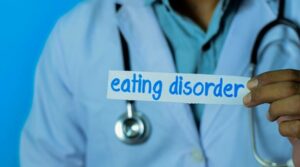 Professional help implies seeking guidance from a therapist, nutritionist, or doctor. This is often the first step in treatment, as it can help you understand your disorder and start making changes.
Professional help implies seeking guidance from a therapist, nutritionist, or doctor. This is often the first step in treatment, as it can help you understand your disorder and start making changes.
Therapy: This is a type of counseling that can help you understand your thoughts, feelings, and behaviors. It can also help you learn how to cope with your disorder in a healthy way. Some of the most common therapy types include:
- Cognitive behavioral therapy
- Psychodynamic therapy
- Dialectical behavioral therapy
- Interpersonal therapy
- Family-based therapy
One may also use a combination of therapies for treatment.
Nutrition counseling: This involves meeting with a nutritionist or dietitian to discuss your eating habits. This type of counseling can help you understand the role that food plays in your life. It can also help you develop healthy eating habits. They can also help to develop a healthy relationship with food and make changes to your diet. The most common and effective interventions under this include:
- Meal plans
- Nutrition education
- Cooking classes
- Food journaling
- Eating out guidance
- Grocery store tours
- Mindful eating
All these contribute to making a person more aware of their eating habits and how to change them for the better.
Medical treatment: In some cases, medical treatment might be necessary. This can include things like medication or hospitalization. Medication is usually only prescribed if there is another mental health condition present, such as depression or anxiety. Hospitalization might be necessary if you are severely underweight or at risk of harming yourself. Common interventions include:
- Restricting food and fluid intake
- Administering IV fluids and/or feeding tube
- Providing psychological support and counseling
- Pharmacotherapy
- Overall medical monitoring
It is very important to coordinate with a professional when undergoing medical treatment. This is to make sure that you are getting the care and support that you need.
Self-Help
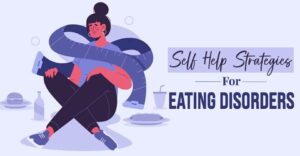 Self-help is rightly called the “first step” in treatment because it is the first thing you can and should do to start getting better. It might seem like a small thing, but making the decision to get help is actually very big. And it is an important step in the right direction. There are many different types of self-help available. Here are some of the most common:
Self-help is rightly called the “first step” in treatment because it is the first thing you can and should do to start getting better. It might seem like a small thing, but making the decision to get help is actually very big. And it is an important step in the right direction. There are many different types of self-help available. Here are some of the most common:
- Eating disorder support groups: These are a great way to meet other people who are going through the same thing as you. It can be very helpful to share your experiences with others who understand what you’re going through.
- Online forums and message boards: These can be great resources for information and support.
- Journaling: This can help you to track your thoughts and feelings. It can also be a way to express yourself and release some of the pent-up emotions you might be feeling.
- Exercise: This can help to improve your mood and energy levels. It can also help to reduce stress and anxiety.
- Relaxation techniques: This can help to reduce stress and anxiety. It can also help you to get a good night’s sleep. These include things like yoga, meditation, and deep breathing exercises.
- Trigger identification: This can help you to identify the things that trigger your disordered eating. Once you know what these triggers are, you can start to work on avoiding them or managing them in a healthy way.
Making the decision to get help is a very important step in treatment. And it is one that you should not take lightly. If you are considering getting help for anything familiar from the eating disorders list, there are many different resources available to you.
Conclusion
In the end, we can determine that eating disorders are mental health conditions that are characterized by unhealthy attitudes and behaviors towards food. This comprehensive eating disorders list and further explanation of symptoms and treatment options will provide a better understanding of the condition as a whole. It is important to seek professional help if you think that you or someone you know might be suffering from an eating disorder. With the right treatment, it is possible to make a full recovery.
If you or someone you know is looking for psychological help, Therapy Mantra is here for you. We are the leading providers of online therapy and counseling. Our team of highly trained and experienced therapists can provide assistance at the most affordable rates. We also have a team of nutritionists providing nutritional counseling to manage food-related problems. Contact us today to learn more about our services. You may also visit our website to book an online therapy session or download our free Android or iOS app for more information.
